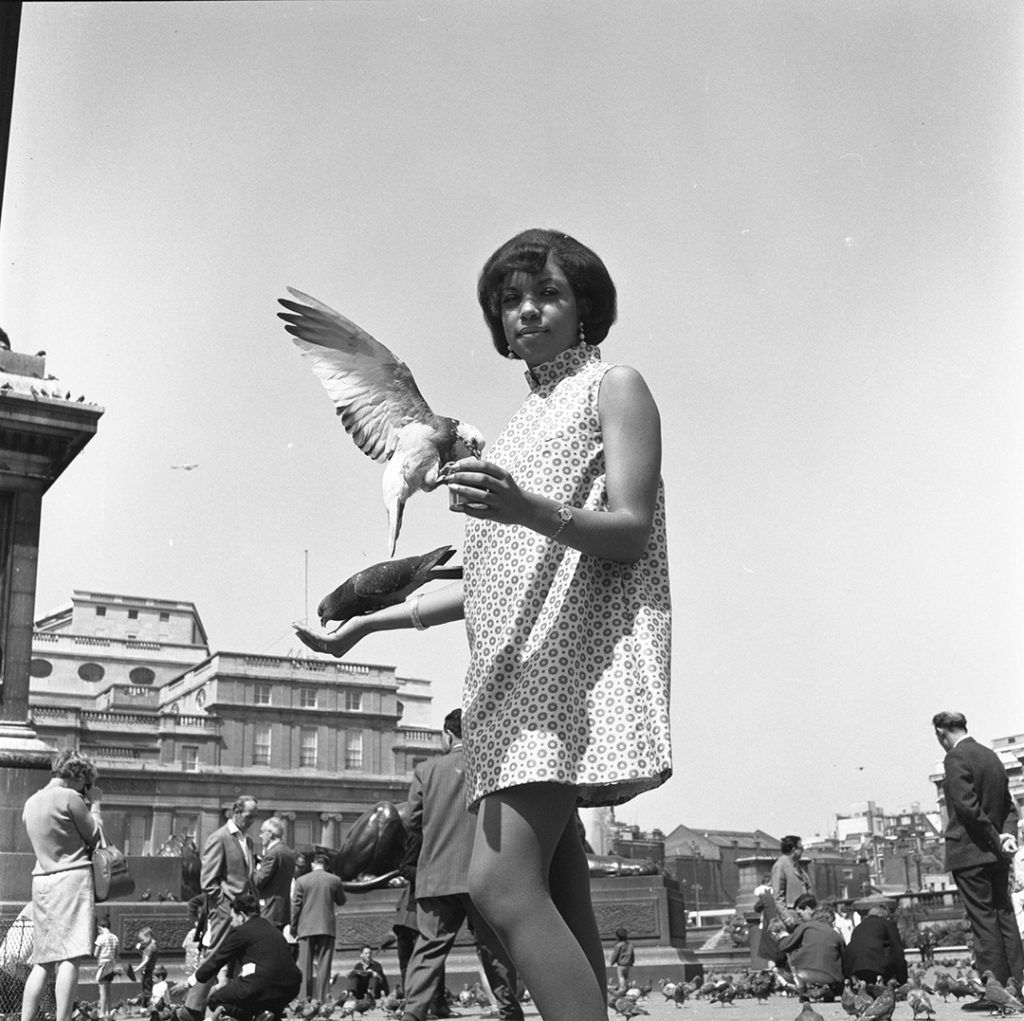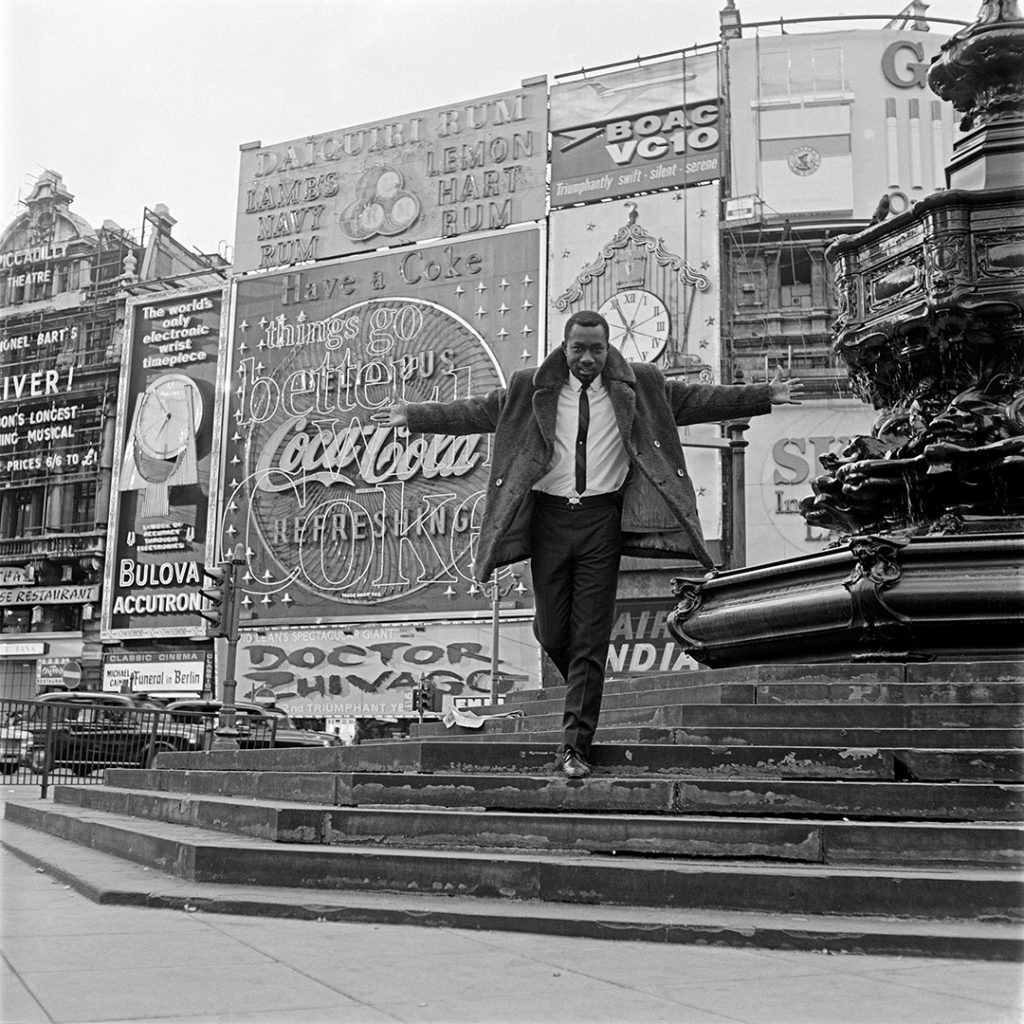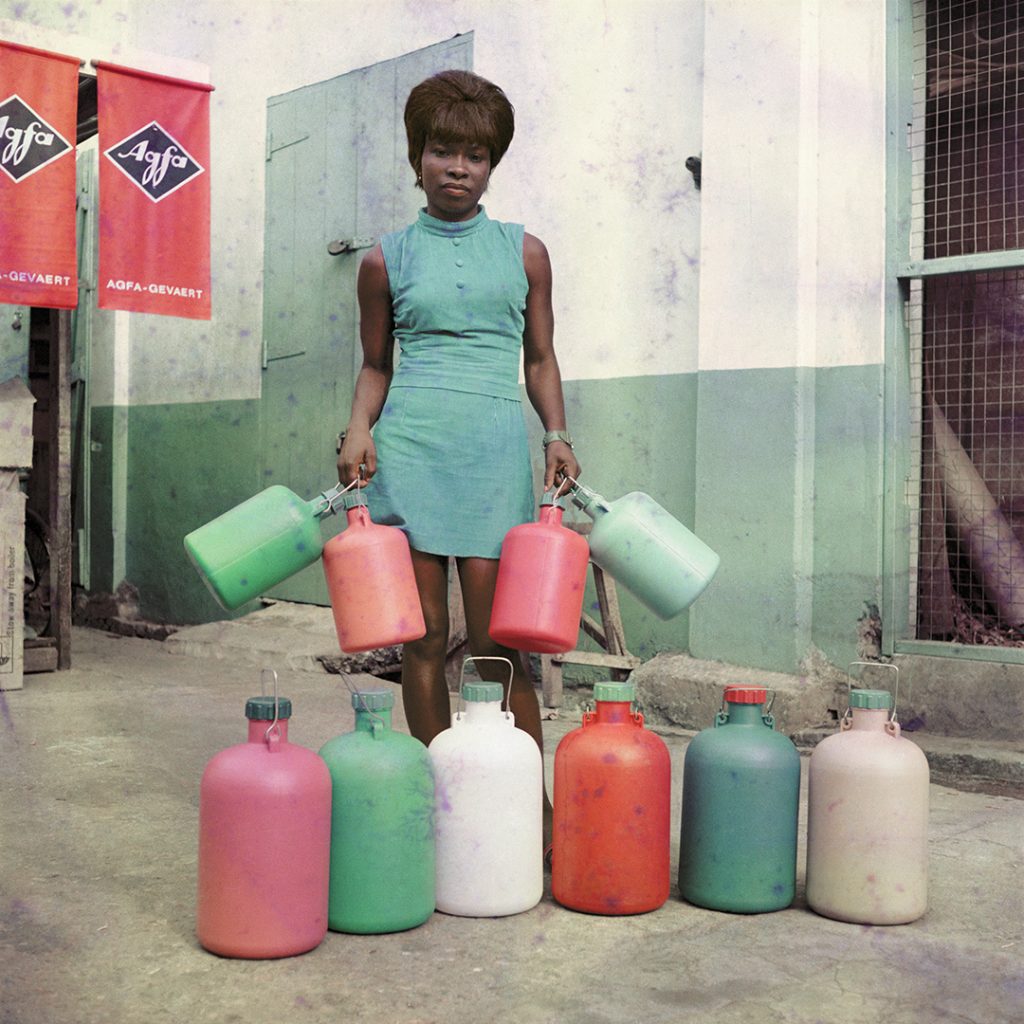Ever Young was the name of the photography studio James Barnor had in Accra. Recounts Barnor, “Long before there was Photoshop, I was using a pencil. I would retouch images to make people look younger”.
Hence the name of the studio. An ironic, meaningful and engaging name. But the same thing could be said of him: always young. And also, of his photos.
Documenting transition
James Barnor was born in 1929 in Ghana. He founded his Ever Young studio in Accra around 1950. In those years, Ghana was unfolding at independence. In an environment enlivened by debates about the future, Barnor’s work began to document the transition. Through a free and authentic style. Even with a measured gaze, his narrative style is a quietly revolutionary act. It couldn’t be otherwise. Yes, because storytelling is also sketching the future.

Arrival in London: Drum
By the time Ghana finally gained independence from Britain in 1957, Barnor had established himself as a photojournalist.
In 1959 he arrived in London, continuing his studies here and carrying on assignments for the influential South African magazine Drum.
The pioneering South African magazine Drum reflected the spirit of the time and the experiences of London’s burgeoning African diaspora. Jim Bailey had founded Drum in 1951 and established an ongoing relationship with Barnor; even using the magazine’s Fleet Street office as a base when he first arrived in London.
Barnor returned to Ghana in the early 1970s to establish the country’s first color processing workshop. He continued his work as a portrait photographer and also participated in the music scene.
“At the age of 79, I was recognized”
He finally returned to London in 1994 where his work began to attract a new audience. A wider public. Through exhibitions at locations such as Black Cultural Archives in 2007 and Rivington Place in 2010.
“At age 79, I was recognized” said the photographer, with a hint of irony.
His original vision of community is one of his hallmarks. Yet it manifests itself with uncommon expressive power. After that an amalgam of myth and reality.
“Every walk of life,” Barnor says, “needs photography. You have to use it to teach and to record an instance. People and portraiture are the most important thing: when you go to a place, it’s the people you meet that will be the thing you remember”.

Truth and Tale
His narrative of Pan-Africanism and hopes for a new future is, indeed, an out-of-the-box expressive attitude. Able, in some way, to mix truth and tale. Transforming it, in the end, into something more true. In other words, this is the “connection” that makes Barnor’s shots unique. He recounts the social and political changes that have marked the recent history of his country. In doing so, he also narrates the vicissitudes of London’s African community. Situating it within a time frame of six decades. With special attention devoted to the decades from 1950 to 1980.
For the artist, family and community have been a constant source of inspiration. Among those he has had the good fortune to have photographed are pan-Africanist politician J.B. Danquah, future first president of Ghana Kwame Nkrumah, the Duchess of Kent, then U.S. Vice President Richard Nixon and boxing champion Roy Ankrah.
“Lucky Jim,” as his friends fondly call James Barnor, still radiates optimism. At 93, his talent is always on the move. As it was while he was photographing Ghana’s high society and simultaneously managing bands and hosting concerts. Until dawn in his studio in Jamestown, Accra. A man of uncommon creativity. Enduring and always open to new challenges.

The Retrospective
MASI in Lugano presents the largest and most comprehensive retrospective ever dedicated to the Ghanaian photographer. Realized by the Serpentine Galleries of London, the exhibition records the long career during which Barnor has measured himself with every photographic genre: from studio portraits to journalistic reportages. From fashion editorials to street photography.
The show presents work from the artist’s personal archive, including many previously unpublished images.
“A sort of homecoming; in which previously orphaned images are given a second life” as art historian Kobena Mercer put it.
After the show at MASI Lugano, the exhibition will be at the Detroit Institute of Arts.
James Barnor: Accra/London – A Retrospective is sponsored and organized by Serpentine Galleries, London. Curated by Lizzie Carey-Thomas, Chief Curator, Serpentine and Awa Konaté: Culture Art Society (CAS), Assistant Curator.
Read more: MASI in Lugano
A video of James Barnor: link
Serpentine Galleries, London: link
You may also be interested in: Recycle and reprocess waste





